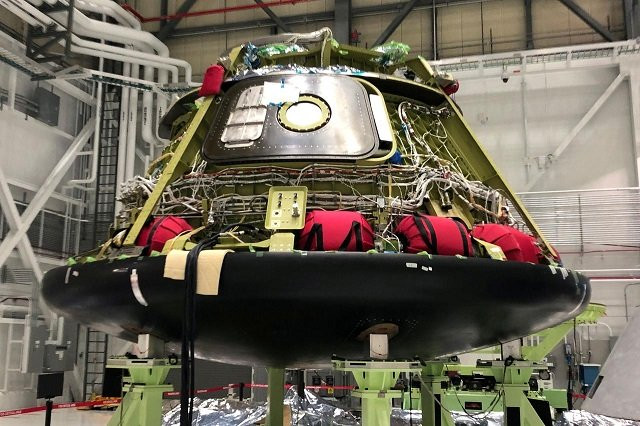NASA, Boeing probe software glitch that stopped astronaut capsule from reaching space station
Boeing Co’s CST-100 Starliner astronaut capsule had a successful launch for its first unmanned test mission

One of Boeing Co's CST-100 Starliner astronaut capsules is seen at a production facility in Cape Canaveral, Florida, US, January 15, 2019. PHOTO: REUTERS
Boeing Co’s CST-100 Starliner astronaut capsule had a successful launch for its first unmanned test mission, but what has been described as an automated timer error prevented the spacecraft from attaining the correct orbit for it to rendezvous and dock with the space station.
The US space agency is forming an investigative team to determine what caused the timer glitch and “any other software issues,” NASA said. The team will “provide corrective actions” needed before Starliner can fly a crew of astronauts for the first time, it added, saying the probe will take about two months.
NASA said it was weighing whether to make Boeing repeat the test, which would likely cost tens of millions of dollars and add further delay, to show it can dock at the station successfully. Docking was a key requirement for the test under Boeing’s contract.
“Although data from the uncrewed test is important for certification, it may not be the only way that Boeing is able to demonstrate its system’s full capabilities,” the agency said.
India loses contact with spacecraft on mission to the moon
It added that it would take NASA “several weeks” to decide whether Boeing will need to re-do its test or carry on to the final test flight of lofting humans to the space station, set for later this year.
The spacecraft, a cone-shaped pod with seats for seven astronauts, landed successfully in White Sands, New Mexico six days earlier than planned, after its December launch.
The landing, which tested the capsule’s difficult re-entry into the atmosphere and parachute deployment, yielded the mission’s most valuable test data, NASA Administrator Jim Bridenstine said.
Low-cost Moon mission puts India among lunar pioneers
NASA awarded $4.2 billion to Boeing and $2.5 billion to Elon Musk’s rival SpaceX in 2014 to develop separate capsule systems capable of ferrying astronauts to the space station from US soil for the first time since NASA’s space shuttle program ended in 2011.
NASA has since relied on Russian spacecraft for hitching rides to the space station.
SpaceX is also in the midst of a joint investigation with NASA after its Crew Dragon astronaut capsule exploded last April on a test stand in Florida, moments before test-firing a suite of rocket thrusters meant to propel its crew to safety in the event of a rocket failure.



















COMMENTS
Comments are moderated and generally will be posted if they are on-topic and not abusive.
For more information, please see our Comments FAQ